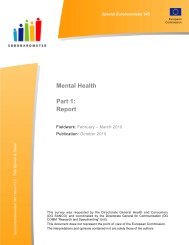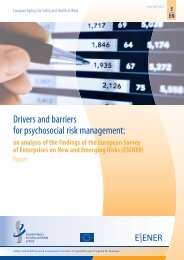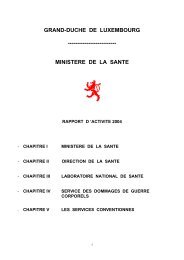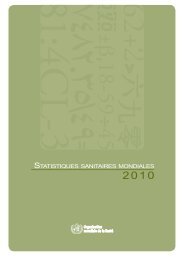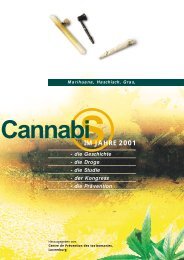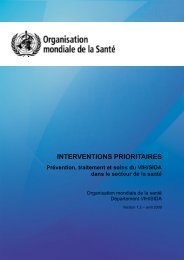Global Tuberculosis Control 2010 - Florida Department of Health
Global Tuberculosis Control 2010 - Florida Department of Health
Global Tuberculosis Control 2010 - Florida Department of Health
You also want an ePaper? Increase the reach of your titles
YUMPU automatically turns print PDFs into web optimized ePapers that Google loves.
he World <strong>Health</strong> Organization (WHO) has published<br />
an annual report on global control <strong>of</strong> tuberculosis<br />
(TB) every year since 1997. The main purpose <strong>of</strong> the<br />
report is to provide a comprehensive and up-to-date<br />
assessment <strong>of</strong> the TB epidemic and progress made in TB<br />
care and control at global, regional and country levels.<br />
This fifteenth annual report 1 contains more up-to-date<br />
information than any previous report in the series, following<br />
earlier data collection and the completion <strong>of</strong> the<br />
production cycle within a calendar year.<br />
The main part <strong>of</strong> the report is structured in eight<br />
major sections, as follows:<br />
Methods. This section explains how the data used to<br />
produce the report are collected, reviewed and analysed.<br />
The global burden <strong>of</strong> disease caused by TB in<br />
2009. This section presents estimates <strong>of</strong> incidence,<br />
prevalence and mortality (absolute numbers and<br />
rates) at global, regional and country levels in 2009.<br />
<strong>Global</strong> targets, the WHO Stop TB Strategy and<br />
the <strong>Global</strong> Plan to Stop TB. This section defines<br />
the global targets for TB control that have been set<br />
for 2015, as part <strong>of</strong> the Millennium Development<br />
Goals (MDGs) and by the Stop TB Partnership. It then<br />
describes the main components <strong>of</strong> the Stop TB Strategy<br />
and the Stop TB Partnership’s <strong>Global</strong> Plan to Stop<br />
TB, which in combination have set out how the global<br />
targets can be achieved.<br />
Progress in implementing the Stop TB Strategy<br />
and the <strong>Global</strong> Plan to Stop TB. This section<br />
includes analysis <strong>of</strong> case notifications, treatment outcomes,<br />
case detection rates (for all forms <strong>of</strong> TB), the<br />
contribution <strong>of</strong> public–private mix (PPM) initiatives<br />
to case notifications, implementation <strong>of</strong> collaborative<br />
TB/HIV activities and the management <strong>of</strong> drugresistant<br />
TB. It also features the topic <strong>of</strong> human<br />
resource development and provides an update about<br />
the work <strong>of</strong> the <strong>Global</strong> Laboratory Initiative, whose<br />
goal is to strengthen laboratories worldwide.<br />
Financing for TB control. Recent trends in funding<br />
for TB control, including comparisons with the<br />
funding requirements estimated in the <strong>Global</strong> Plan,<br />
are presented and discussed. Recent successes in<br />
strengthening planning and budgeting for TB control<br />
using the WHO TB planning and budgeting tool are<br />
showcased.<br />
Progress towards the 2015 targets. This section<br />
analyses trends in rates <strong>of</strong> TB incidence, prevalence<br />
and mortality from 1990 to 2009, and assesses whether<br />
the 2015 targets can be achieved at global, regional<br />
and country levels.<br />
<br />
<br />
<br />
<br />
<br />
<br />
<br />
<br />
<br />
<br />
<br />
<br />
<br />
<br />
<br />
<br />
<br />
<br />
<br />
<br />
<br />
<br />
<br />
<br />
<br />
<br />
<br />
<br />
<br />
Improving measurement <strong>of</strong> the burden <strong>of</strong> disease<br />
caused by TB. This section summarizes progress at<br />
country level in strengthening surveillance (<strong>of</strong> cases<br />
and deaths) and implementing surveys <strong>of</strong> the prevalence<br />
<strong>of</strong> TB disease, in the context <strong>of</strong> the policies and<br />
recommendations <strong>of</strong> the WHO <strong>Global</strong> Task Force on<br />
TB Impact Measurement.<br />
Conclusions. This final section draws together the<br />
main findings and recommendations in the report.<br />
explains the methods that were used to produce<br />
estimates <strong>of</strong> disease burden. contains summary<br />
tables that provide global, regional and country-specific<br />
data for the main indicators <strong>of</strong> interest. <br />
for all countries are available online at www.<br />
who.int/tb/data; their content is advertised in .<br />
1<br />
Two reports were published in 2009. The first report (March) included<br />
key indicators up to and including 2007 (for example, estimates<br />
<strong>of</strong> disease burden and case notifications). The second report (published<br />
on the web in December) included key indicators up to and<br />
including 2008. Two reports were produced in one year in anticipation<br />
<strong>of</strong> a different production cycle in which reports would always<br />
contain data up to and including the previous calendar year.



